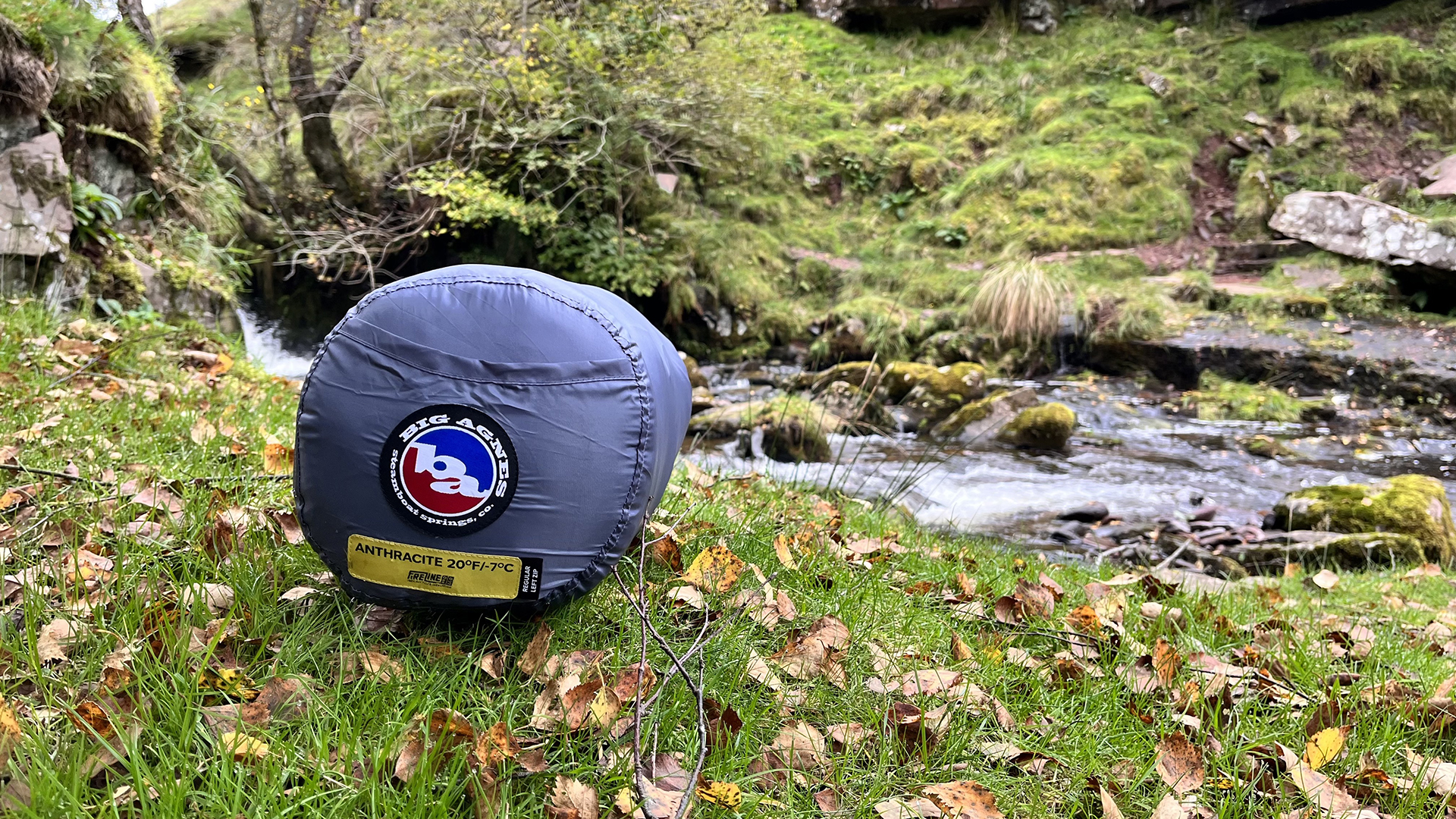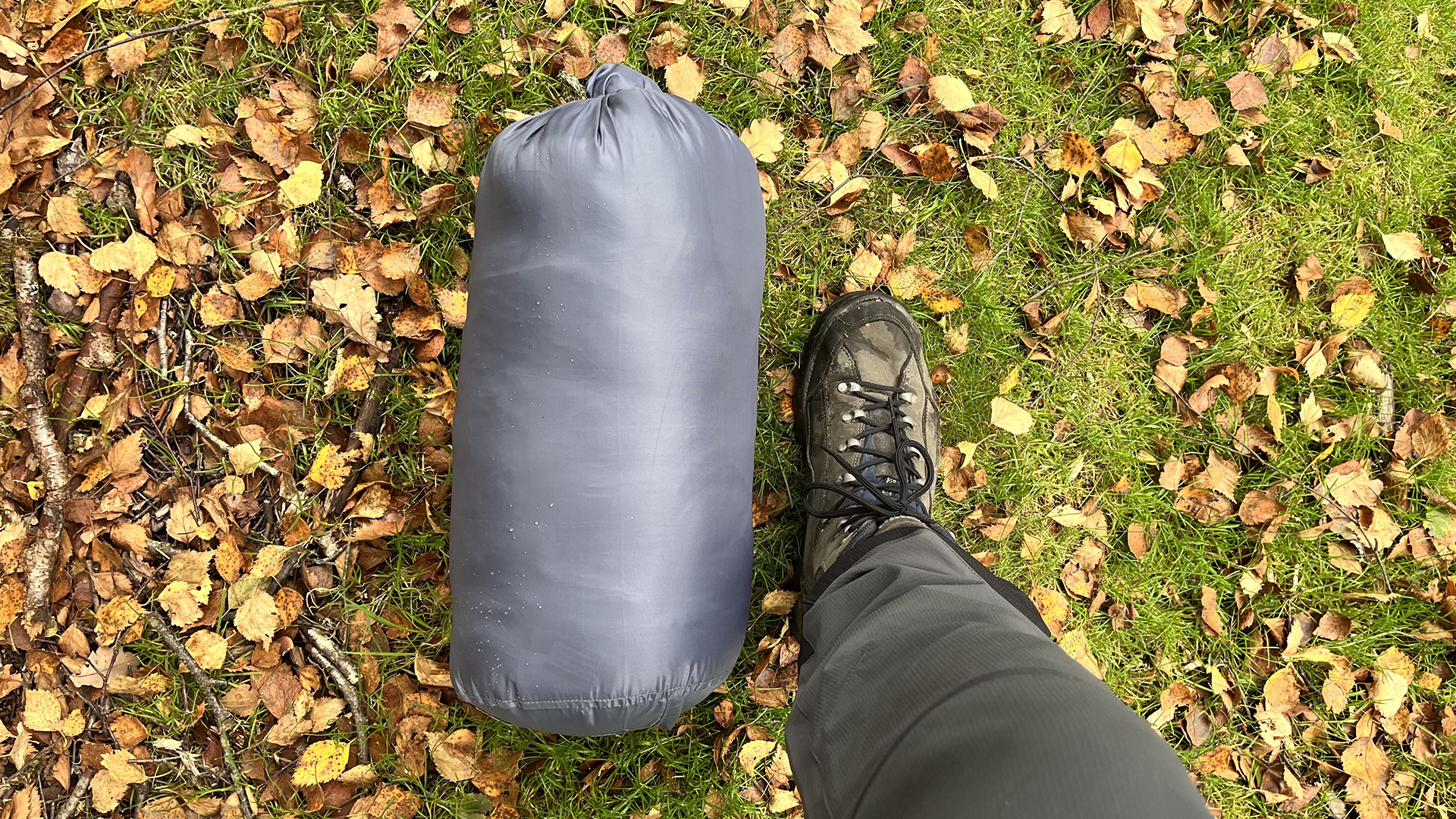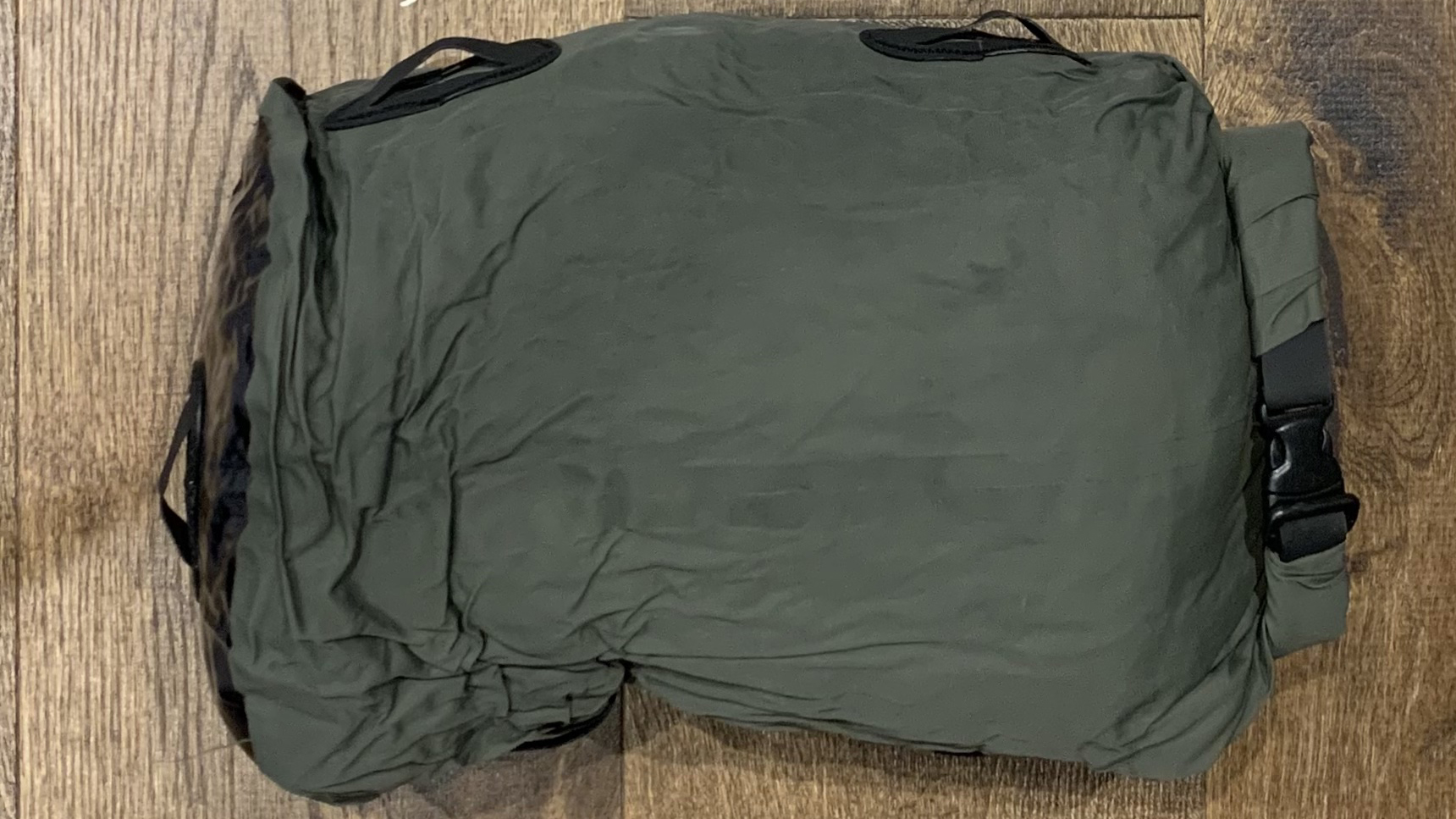What is ‘packed size’ when it comes to outdoor gear?
Whenever you’re shopping for a piece of outdoor gear, its ‘packed size’ is something you’ll need to be aware of. Here’s what it means

Whether you’re on the market for a tent, a sleeping bag, a sleeping pad or a new waterproof jacket, the term ‘packed size’ is going to come up time and time again. So what is it, exactly? Let’s take a look at what this common industry phrase actually relates to – and take a deep dive into why an item’s packed size is something you should be keenly aware of.
What is ‘packed size’?

The packed (or pack) size of any given piece of outdoor equipment is, in a nutshell, the amount of space it takes up when it’s packed away or broken down, ready for storing. The term is therefore normally applied to items that can be reduced in size, such as tents, sleeping bags, sleeping pads, camping pillows, down jackets, hammocks, cots and other packable items. These items tend to come with additional carry bags or stuff sacks that allow you to pack down each item into smaller packages so that they take up as little space as possible – all to allow you to carry them more easily over long distances.
Types of stuff sacks and carry bags

Stuff sacks can come in various shapes and sizes, ranging from tubular bags with a drawstring through to roll-top waterproof bags and zippable carry sacks. And while it’s possible to chop and change your stuff sack depending on your setup, most are purpose-made for the individual item in question.
Sleeping bags, for example, usually come with a circular stuff sack with drawcords along the side and a ‘lid’ on top. This allows you to cinch down everything tight and push as much air out of the bag as possible to reduce the overall carry size.
Sleeping pads normally come with a tubular carry bag that allows you to store a rolled-up pad in the most size-optimized format possible. A drawstring tends to be the go-to method of choice for closing these, though this can vary depending on the manufacturer and style of the pad.
When it comes to down jackets, you’ve normally got two options depending on the design of the coat in question. For maximum weight optimization, many can be stuffed into their own pocket (usually the inside chest pocket), which means you don’t need to worry about misplacing the stuff sack. Unfortunately, however, stuffing a large jacket into a zip-operated tight pocket can result in snagging the material or even causing small rips. For that reason, many of the lightest weight (and most expensive) jackets – the coats with the most fragile outer shells – tend to come with an additional lightweight stuff sack that’s drawstring-operated to avoid any snagging.
How big is too big for a packed size?

Packed sizes vary widely depending on the product and the intention behind different bits of kit. A four-season tent for expeditions is going to be considerably bigger than an ultralightweight three-season backpacking tent, for example. And a deep-winter down sleeping bag is never going to pack down as much as a lightweight summer bag built for temperatures above 20°C / 68°F.
Advnture Newsletter
All the latest inspiration, tips and guides to help you plan your next Advnture!
As a rule of thumb, though, a good option when compiling your kit list is to start with the big four: your tent, your sleeping bag, your sleeping pad and your pack. Then it’s a matter of doing the math to understand how much you can fit in your backpack based on the packed size of your pad, bag and tent and the volume of space in your pack.
How can I minimize packed size?

To minimize packed size, play around with different items to see how you can best pack them down as small as possible. When it comes to tents, for example, consider taking out the poles and carrying those in one of your pack's outside pockets or down the side of the inner compartment. This will allow you to squash the rest of the structure down into a much smaller package.
When it comes to items like sleeping bags and down jackets, a good approach is to vacuum seal these in a dry bag. This can be achieved by stuffing the item into a roll-top dry bag and squashing out as much of the air as possible. Then simply roll up the enclosure and mold it into whatever shape you want. Not only does this ensure that your kit doesn’t get wet, but it also allows you to turn packing your bag into a game of Tetris – perfect for maximizing all available space.
Growing up just south of the glorious Brecon Beacons National Park, Craig spent his childhood walking uphill. As he got older, the hills got bigger, and his passion for spending quality time in the great outdoors only grew - falling in love with wild camping, long-distance hiking, bikepacking and fastpacking. Having recently returned to the UK after almost a decade in Germany, he now focuses on regular micro-adventures in nearby Snowdonia and the Brecon Beacons, as well as frequent trips to the Alps and beyond. You can follow his adventures over on komoot.

